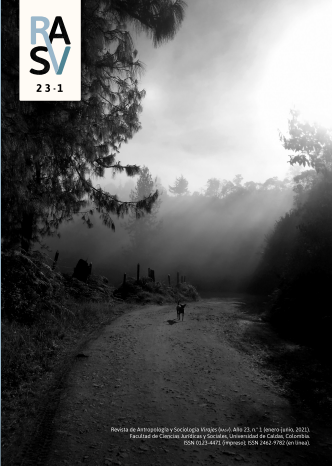Authors
Abstract
This article investigates magic as a transversal and interdisciplinary matter. For this case, it is from Frazer, Foucault and Derrida that a roadmap is drawn up to think and settle the conditions of possibility that shape the magical act and that allow it to be thought from the “primitive” practices described by the Scottish anthropologist, going through the episteme of the 16th century to finally reach writing and its understanding as phármakon. This with the aim of outlining, perhaps, the continuities and discontinuities of the inheritance of a magical thought.
Keywords
References
Derrida, J. (1968). La farmacia de Platón. Recuperado de https://filologiaunlp.files.wordpress. com/2012/02/derrida-jacques-la-farmacia-de-platc3b3n-en-la-diseminacic3b3n.pdf
Foucault, M. (1968). Las palabras y las cosas. Buenos Aires: Siglo XXI Editores.
Foucault, M. (1999a). Un saber tan cruel. En Entre filosofía y literatura (pp. 149-162). España: Paidós.
Foucault, M. (1999b). Prefacio a la transgresión. En Entre filosofía y literatura (pp. 163-180). España: Paidós.
Foucault, M. (2013). La gran extranjera. Para pensar la literatura. Epublibre. Recuperado de http://ceiphistorica.com/wp-content/uploads/2016/04/Michel-Foucault-Lagran-Extranjera.pdf
Frazer, S.J. (1944). La rama dorada. Magia y religión. México: Fondo de Cultura Económica.
RAE. (1732). Diccionario Académico de Autoridades. En Nuevo Tesoro lexicográfico de la lengua española. Recuperado de http://buscon.rae.es/ntlle/SrvltGUIMenuNtlle?cmd=Lema&sec=1.0.0.0.0
RAE. (2014). Diccionario de la lengua española (23a ed.). Recuperado de http://dle.rae.es/?id=P7dyaFK
Ruiz, F. (2017). Jano: el dios de dos caras. Vavel. Recuperado de https://www.vavel.com/es/historia/2017/10/20/839164-jano-el-dios-de-las-dos-caras.html

 pdf (Español (España))
pdf (Español (España))
 FLIP
FLIP



















